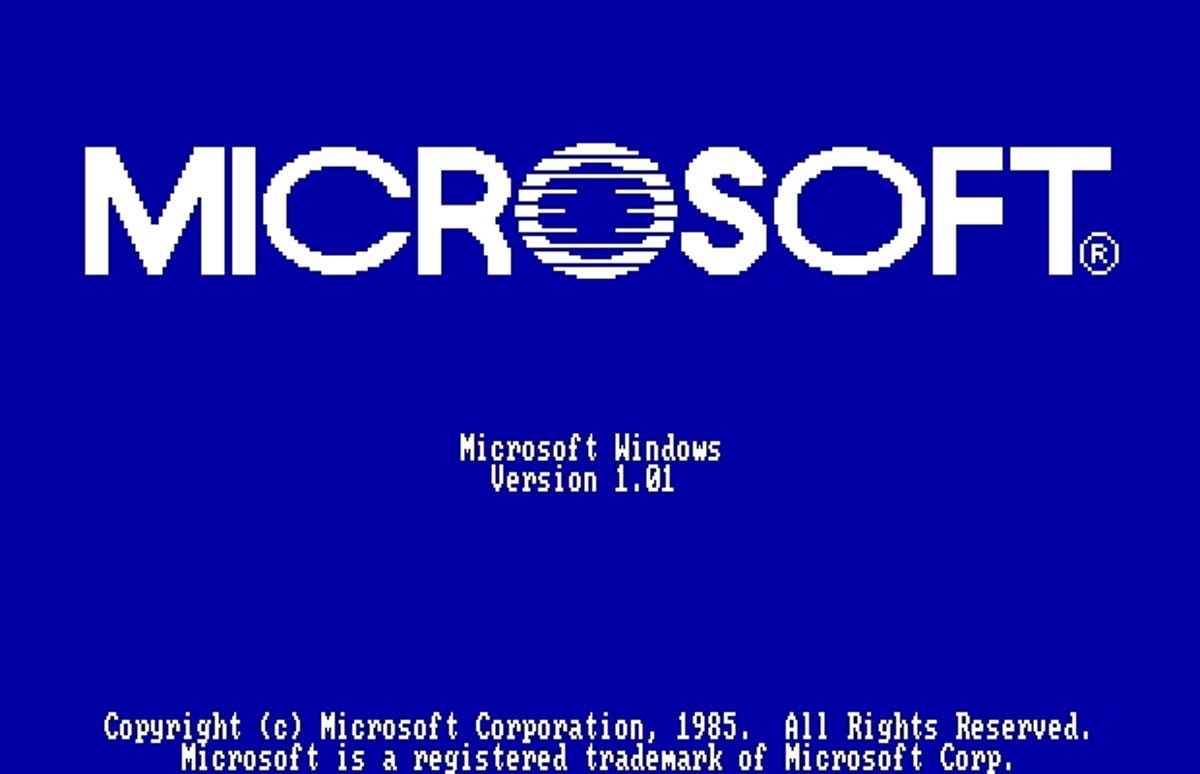
Microsoft
After 30 years, Windows has turned 10. Microsoft took the wraps off the latest version of its venerable operating system, Windows 10, at an event in San Francisco on Tuesday.
But how did Windows come to take over the offices, schools and homes of almost every computer user in the world and make Bill Gates the richest man in the world? It all began in 1983 when Gates introduced the new software in its earliest form. To see how things have changed, take a romp down Read-Only-Memory Lane and click through the pictures for the history of Windows.
Windows is 30, so here’s how it took over the world






Quick and dirty
In 1975, Seattle school friends Bill Gates and Paul Allen started Micro-Soft in Albuquerque, New Mexico. In 1980, IBM approached Microsoft about creating an operating system for its personal computers. Never having written an OS before, Microsoft simply bought an operating system called QDOS — or ” Quick and Dirty Operating System” — and changed the name to MS Disk Operating System before licensing it to IBM.
MS-DOS required you to type in arcane commands, so Microsoft set to work on making a new OS with a more accessible user interface. Codenamed ‘Interface Manager’, the OS used a mouse and onscreen drop-down menus, scroll bars and icons in boxes to control your computing.
Windows is born
These “windows” gave a name to the software. Microsoft Windows was announced in 1983 and version 1.0 launched two years later on 20 November 1985.
To run Windows 1.0, you needed a minimum of 256 kilobytes, two double-sided floppy disk drives and a graphics adaptor card. Here’s Microsoft’s business brain Steve Ballmer telling you how it works…
Windows 2.0 followed on 9 December 1987, then Version 3.0 on 22 May 1990, by which time Windows was well on the way to taking over the world.
Screensaver in space!
Windows 3.0 and its successor 3.1 sold 10 million copies, driven by the rise of computers packing an Intel 386 processor. That, and the fact that the desktop OS had a screensaver that made it look as if you were flying through space! By then, it looked like the Windows we know and love — or love to hate.
Windows NT was a 32-bit operating system built from scratch that arrived on 27 July 1993. It was intended to complement the MS-DOS-based consumer versions of Windows, although most subsequent versions of the OS were based on NT. NT originally stood for the N-Ten Intel i860 XR processor, but marketing later created the backronym New Technology.
Start me up
Windows 95 added the Start button, taskbar and those pesky little minimise, maximise and close buttons on 24 August 1995. It came with built-in Internet support and dial-up networking, so you could surf cyberspace and cruise the Information Superhighway with the Internet Explorer Web browser. On 25 June 1998, Windows 98 added supports for USB and DVDs. It was the last version of the OS based on MS-DOS.
Windows XP emerged into the light on 25 October 2001, and was the first iteration to offer a 64-bit version as well as Media Center and Tablet PC editions.
It’s hard to give an exact birth date for Windows Vista in 2006, and Windows 7 in 2009, as both were rolled out in stages to developers and manufacturers before hitting shops. Both featured all kinds of flashy new graphical interface tweaks, but both launches were also marred by confusion over upgrades, price changes, and disjointed versions of the software.
Brave new Windows
And that brings us almost up to date with Windows 8. Launched on 25 October 2012, Windows 8 represented one of the most audacious transformation Microsoft had ever attempted. In this new era of touchscreens and tablets, Windows 8 boasts a bold new look, all coloured tiles and finger-friendly gestures. The venerable OS was also split in two: full-sized Windows for PCs and more powerful tablets, and Windows RT, a version of the software specifically for tablets running tablet-optimised apps.
First look at Windows 10 (pictures)






The bold new design isn’t everybody’s cup of tea, and the first major update Windows 8.1 reinstated some more traditional elements like a Start button reminiscent of earlier versions of the software. That process seems to have continued, judging by our first look at Windows 10, due to be released in 2015.
Hang on — haven’t we forgotten something? Nope: Microsoft has skipped Windows 9, ostensibly because the new software is such a big leap forward. Whether that’s true remains to be seen — but with 30 years of experience behind it, it’s a safe bet Windows will be around for many more years to come.
Images: toastytech.com, User:Norm, Microsoft




